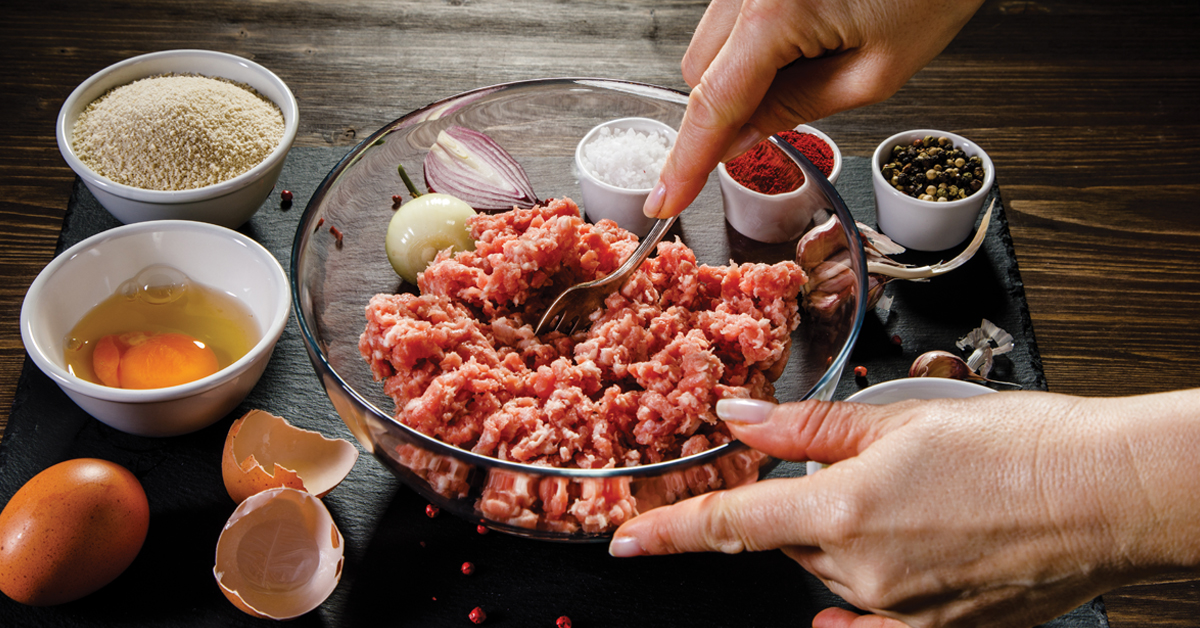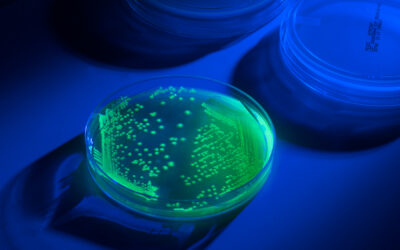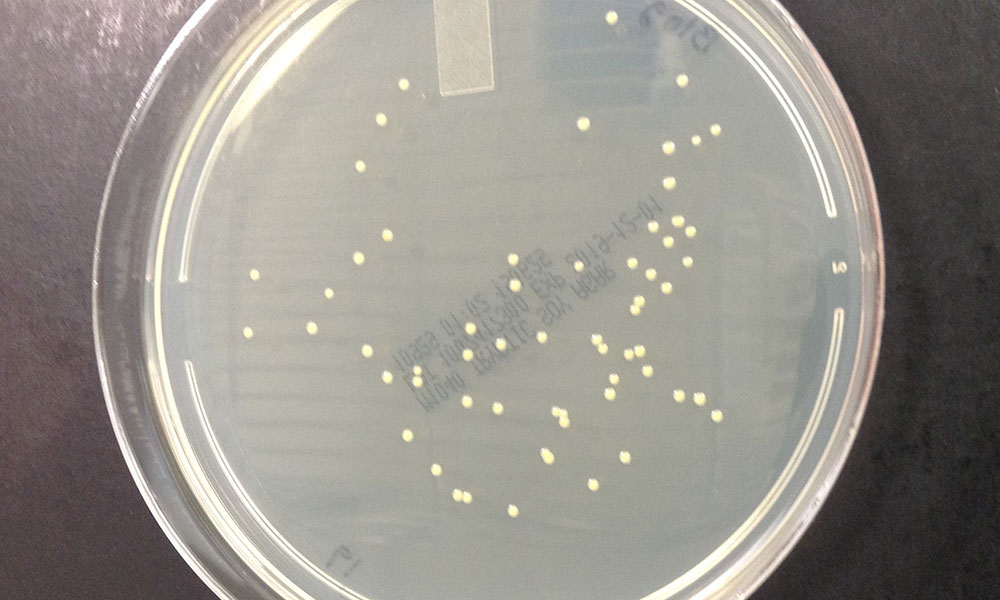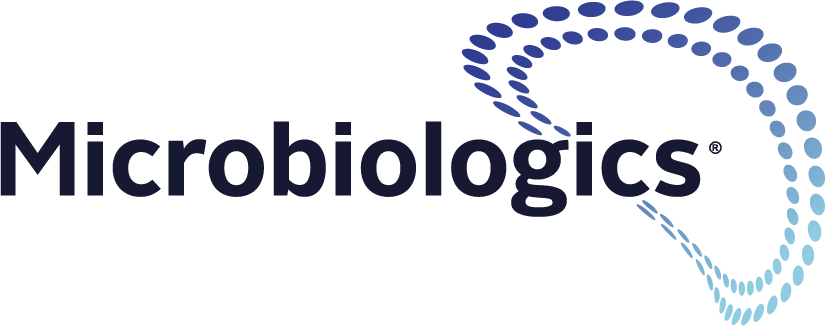Food recalls demonstrate the importance of performing quality control during food testing and environmental monitoring in testing laboratories and manufacturing sites. Although QC is common during food testing, some laboratories do not apply the same quality control rigors to environmental monitoring, forgoing the use of controls made from in-house isolates. In 2022, there were an estimated 420 recalls related to food products; of those, about 120 were due to bacterial contamination (Beach). Food can be contaminated at any step of the many processes involved, such as harvesting, manufacturing, distribution, handling, and many more (Abebe). Having good, validated quality control procedures in place can help minimize bacterial contamination recalls, prevent consumer illnesses, protect brand identity, and offer assurance in food safety. Two notable recall events of 2022 demonstrate the need for comprehensive QC: (1) imported enoki mushrooms and (2) powdered baby formula. These recalls emphasize the need for a robust QC program that includes challenge testing with common food pathogens as well utilizing a facilities in-house isolates.
Imported enoki mushrooms, which are popular in East Asian cuisines, are among the most recalled food products, due to Listeria monocytogenes contamination. Since 2021, there have been 18 enoki mushroom recalls due to L. monocytogenes (FDA, D.). 11 of those 18 recalls occurred in 2022 (FDA, A.). Investigations performed by the Food and Drug Administration (FDA) suggest that enoki mushrooms may be a high-risk host for the species, as numerous enoki mushroom shipments from Asia have contained the same genomic sequence. From 2021 to date, based on FDA sampling and analysis, L. monocytogenes has been found in 43% of sampled enoki mushrooms from the Republic of Korea, and 15% of sampled enoki mushrooms from China (FDA, D.).
Cultivated enoki mushrooms have a higher contamination risk than ones harvested in the wild. The cultivated mushrooms are white, unlike the brown wild mushrooms, because they are grown in dark environments that have high humidity, an increase in carbon dioxide (CO2), and temperatures about 21-25°C (Casalena). These environmental conditions encourage L. monocytogenes to grow. This bacterium is commonly found in soil, water, animals and moist environments that are cool and damp with high humidity (FDA C.; Ruback).
When L. monocytogenes-contaminated foods are consumed, it results in listeriosis, which is one of the more serious food illnesses. Listeriosis has two presentations – intestinal and invasive. Intestinal illness symptoms start with 24 hours after eating contaminated foods and last a few days, and bacterial infection is localized the intestines. Invasive illnesses start within two weeks of consuming contaminated foods, and the bacteria has spread beyond the intestines. Symptoms are much more severe with invasive illnesses (CDC, A.).
What makes this organism so resilient is its ability to adapt to stressors in its environment. In food testing, stressors present may be intrinsic to the food matrix, or they may be extrinsic factors, which are intentionally applied to the food system for preservation or imposed onto the organisms upon consumption. In addition to being thermotolerant (heat-loving), psychrotolerant (cold-loving), and halotolerant (salt-loving), L. monocytogenes is able to withstand acidic pH levels, oxidative stress and osmolarity, among many other stressors (Bucur). With resistance to so many stressors, it can be difficult to safely preserve foods that may carry L. monocytogenes and makes detection crucial. L. monocytogenes can be found in a wide variety of foods, including ready to eat foods such as fruits, vegetables, and lunch meats; dairy products such as milk and ice cream; soft cheeses; meats and seafood; and much more (Hitchens, Jinneman, and Chen). Enoki mushrooms are primarily eaten cooked but can be eaten raw; because of this, they are considered ready to eat (Alfaro). Ready to eat foods are a concern because contamination can occur after the product was processed, and the foods are often not washed properly or cooked prior to consuming (Food Standards Australia & New Zealand). Contamination can occur while harvesting the mushrooms, additional handling steps such as repackaging, and even after the food has been processed. Contaminants can even be transferred between ready-to-eat products during shipping and grocery stores (Food Standards Australia & New Zealand). Both FDA and AOAC provide guidance for testing food samples and rapid identification of L. monocytogenes. Recalls of L. monocytogenes-contaminated enoki mushrooms demonstrate why it is important to not only perform food testing on all food products but also ensure your methods are able to detect contaminants, using strict QC protocols.
The most critical and detrimental recall of 2022 was of powdered baby formula recall. When the FDA inspected the powdered infant formula manufacturing facility in February 2022, environmental samples were collected and Cronobacter sakazakii was found in areas of medium to high care during their production process (FDA, B.). Among many other impacts, this recall contributed to shortages in a market already impacted by inflation and supply chain challenges.
Cronobacter infections are especially dangerous for infants who are younger than two months, were born prematurely, or have weakened immune systems, because of its ability to cause sepsis and meningitis (CDC, C.; Llamas). In children and adults, Cronobacter infections can cause urinary tract infections and wound infections, making infections less severe compared to infants. For those with weakened immune systems or are over the age of 65, sepsis can occur (CDC, B.)
C. sakazakii is commonly found in water and a variety of dry foods such as powdered infant formula, herbal teas, powdered milk and starches. The commonality between these food products is that they are dried, powdered, and stored in dry conditions, in which this bacterium survive for long periods (CDC, B.). In addition to being found in dry foods and water, this bacterium has also been identified on food processing surfaces and food preparation utensils, creating additional sources of contamination in the final product. C. sakazakii is capable of creating biofilms, which makes it easier for the bacterium to survive desiccation, or drying process, of these powdered food products. C. sakazakii also exhibits resistance to low pH, heat, oxidative stress, and even environments with low water activity, making it difficult to treat, similar to L. monocytogenes (Abebe).
What makes the enoki mushrooms and powdered baby formula recalls vastly different is that L. monocytogenes was found within the food samples tested, whereas C. sakazakii was found throughout the manufacturing facility. Through testing of food samples, no C. sakazakii was found in distributed products. Using genomic sequencing, it was determined that the C. sakazakii identified in the reported cases and the C. sakazakii found in the manufacturing facility were different strains. The manufacturer reported that between their investigations and those of the FDA and Centers of Disease Prevention and Control (CDC), no definitive link was found between the illnesses in children and the formula products (Abbott).
This recall demonstrates why it is important to not only have validated and verified testing methods for the detection of bacteria commonly found in that food source, but also bacteria that are commonly present in the facility. These bacteria can be identified with an effective environmental monitoring program that involves collecting and testing samples from several locations within your facility for pathogens, indicator and spoilage organisms, and even allergens (Safe Food Alliance). These programs are a crucial strategy for preventative measures against contamination because contaminants that may be identified in finished products may be present in the environment. The FDA provides guidance for environmental monitoring programs with ready to eat food products in 21 CFR 117.165 (FDA, E.). When producing food products that are not ready to eat, it is also good practice to have an environmental monitoring program.
Both recalls discussed stress the importance of validated and verified methods for testing food samples and identifying any organisms found. Foodborne pathogens can cause serious bodily harm to consumers, making detection in food products crucial. L. monocytogenes-contaminated enoki mushrooms illustrates the importance of testing food products after each step of the production process. C. sakazakii found throughout powdered formula manufacturing facility highlights the importance of having an environmental monitoring program.
Food testing QC
The E-power line of controls from Microbiologics offers the flexibility to achieve precise CFU concentrations for your food laboratory’s testing needs. For your environmental monitoring program, Microbiologics offers this same convenient precision for your in-house isolates. Laboratories around the world trust Microbiologics for test-ready custom controls made from environmental isolates. Visit our website to learn how Microbiologics can simplify all your microbiology QC.
Sources
Abbott. (2022). Abbott is Restarting Similac Production at Sturgis. Nutrition, Health and Wellness. https://www.abbott.com/corpnewsroom/nutrition-health-and-wellness/abbott-update-on-powder-formula-recall.html
Abebe, G.M. (2020). Cronobacter sakazakii in Infant Food Contamination and Its Survival Strategies in Hostile Conditions. International Journal of Pediatric Research, 6(2), 67. doi.org/10.23937/2469- 5769/1510067.
Alfaro, Danilo. What Are Enoki Mushrooms? A Guide to Buying, Cooking, and Storing Enoki Mushrooms. The Spruce Eats. https://www.thespruceeats.com/what-are-enoki-mushrooms-5197552.
Beach, C. (2023). Report finds an enormous increase in the number of food items recalled in 2022. Food Safety News. https://www.foodsafetynews.com/2023/03/report-finds-enormous-increase-in-number-of-food-items-recalled-in-2022/
Bucur, F., et. al. (2018). Resistance of Listeria monocytogenes to stress conditions encountered in food and food processing environments. Frontiers in Microbiology, 9. doi=10.3389/fmicb.2018.02700.
Casalena, E. (2022). Enoki mushrooms: A complete guide. Plants. https://a-z-animals.com/blog/enoki-mushrooms-a-complete-guide/.
CDC, A. (2022). Symptoms. Listeria (listeriosis). https://www.cdc.gov/listeria/symptoms.html.
CDC, B. (2022). Frequently Asked Questions. Cronobacter. https://www.cdc.gov/cronobacter/technical.html.
CDC, C. (2022). People at Risk. Cronobacter. https://www.cdc.gov/cronobacter/risk.html.
FDA, A. (2022). Abbott Voluntarily Recalls Powder Formulas Manufactured at One Plant. Recalls, Market Withdrawals, & Safety Alerts. https://www.fda.gov/safety/recalls-market-withdrawals-safety-alerts/abbott-voluntarily-recalls-powder-formulas-manufactured-one-plant.
FDA, B. (2022). Abbott Laboratories dba Abbott Nutrition, Sturgis, MI. 483 dated 03/18/2022. https://www.fda.gov/media/157708/download.
FDA, C. (2022). Listeria (listeriosis). Foodborne Pathogens. https://www.fda.gov/food/foodborne-pathogens/listeria-listeriosis.
FDA, D. (2023). Import Alert 25-21. Import Alerts. https://www.accessdata.fda.gov/cms_ia/importalert_1177.html.
FDA, E. (2023). CFR – Code of Federal Regulations Title 21. https://www.accessdata.fda.gov/scripts/cdrh/cfdocs/cfcfr/CFRSearch.cfm?fr=117.165.
Food Industry Council. 2022 Recalls. Food Recalls. https://www.foodindustrycounsel.com/recalls/year/2022.
Food Standards Australia & New Zealand. (2013). Listeria monocytogenes. Agents of Foodborne Illness. https://www.foodstandards.gov.au/publications/Pages/agents-foodborne-illness.aspx.
Hitchens, A., Jinneman, K., and Chen, Y. (2022). 10: Detection of Listeria monocytogenes in Foods and Environmental Samples, and Enumeration of Listeria monocytogenes in Foods. Bacteriological Analytical Manual (BAM). https://www.fda.gov/media/157717/download.
Llamas, M. (2023). Baby Formula Recall. DrugWatch. https://www.drugwatch.com/baby-formula/recall
Ruback, B. (2022). Enoki mushroom is the most recalled food. Eat This, Not That! https://www.eatthis.com/enoki-mushrooms-most-recalled-food-2022/
Safe Food Alliance. (2023). The Essential Guide to Environmental Monitoring. Food Safety Resources. https://safefoodalliance.com/food-safety-resources/the-essential-guide-to-environmental-monitoring/






0 Comments